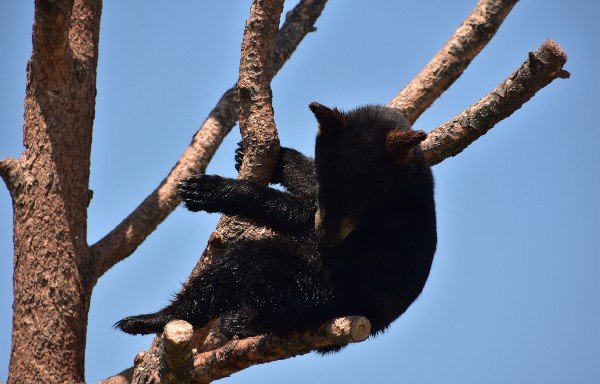Black bears (Ursus americanus) are fascinating and highly adaptable creatures, found in a variety of ecosystems across the globe. Though there may be genetic variations in fur color, most black bears are indeed black, although some may have white patches on their chest. Black bears are known for their straight facial profile from nose to forehead, moderately long ears, and small, dark eyes.
While there are similarities between black and grizzly bears, key differences set them apart. In regions where both species coexist, black bears tend to be smaller and darker. They also have longer, more slender, and rounded ears, and a straighter facial profile than the dished-in, concave facial shape typical of grizzlies. Grizzly bears, on the other hand, are bulkier, with a more prominent shoulder hump and significantly longer front claws, characteristics that are evident in their footprints.
The size of black bears is largely dependent on their environment and food availability. In areas where food is scarce, black bears tend to be smaller, while those in regions with abundant food sources grow much larger. On average, adult black bears stand about three feet tall at the shoulder and measure around seven feet in length from head to tail. Male black bears are significantly larger than females, with weights ranging from 200 to 600 pounds, depending on factors such as region and season.
Where Do Black Bears Live?
Contrary to popular belief, black bears are not exclusive to North America. While they are predominantly found across the continent, from forests in the eastern United States to coastal regions in the west, black bears are remarkably adaptable and can thrive in a wide range of environments. In North America, they inhabit diverse regions, including:
- Forests and Woodlands: These are their primary habitats, providing ample food sources and shelter.
- Mountainous Areas: Black bears are often found in the higher altitudes, where food sources like berries and small mammals are abundant.
- Coastal Regions: Particularly in areas like Alaska and British Columbia, black bears have adapted to forage along coastal shorelines, often feeding on fish.
In addition to these environments, black bears can also adapt to desert areas, although this is less common. Their versatility allows them to thrive in various ecosystems, which explains why they can be found in unexpected places.
Preferred Habitat
While black bears can live in a range of environments, they generally prefer forested areas with dense tree cover, which offers protection and opportunities for climbing. These forest habitats also provide easy access to food and water, which are crucial for their survival. When hiking or camping in bear country, it’s essential to be aware of your surroundings and take necessary safety precautions, as black bears are active foragers in these areas.
What Do Black Bears Eat?
Black bears are omnivores, meaning they have a diverse diet and will consume whatever is available to them. Their diet typically includes:
- Plant-based foods: Grass, berries, nuts, and roots make up the bulk of their diet.
- Insects: They will also eat insects such as ants, beetles, and larvae.
- Small mammals: When plant-based food is less abundant, black bears will hunt small mammals like rodents or rabbits.
- Fish: In coastal areas, fish become a significant source of protein.
- Carrion: Black bears are opportunistic scavengers and will feed on carrion when available.
In areas where human activity is present, black bears may also become habituated to human food and garbage. They are known to raid garbage bins, campsites, and even livestock feed. This behavior can lead to dangerous interactions with humans, often resulting in bears being relocated or euthanized.
How Do Black Bears Hibernate?
One of the most fascinating aspects of black bear behavior is their ability to hibernate during the colder months. Typically, black bears enter hibernation between November and March, although in some regions, they may hibernate for as long as half the year. During this time, their metabolic processes slow dramatically. Their heart rate drops to around 25-35 beats per minute, and their body temperature lowers from around 97 degrees Fahrenheit to approximately 34 degrees. Remarkably, black bears do not produce urine or feces during hibernation, relying entirely on their stored fat reserves for survival.
However, black bears in warmer climates may not hibernate at all. In these regions, bears remain active throughout the winter months, foraging for available food, including human trash or winter-killed animals.
Role in the Ecosystem
No matter where they live, black bears play an essential role in maintaining the balance of their ecosystems. By consuming a variety of plants and animals, they help control the population of prey species and contribute to seed dispersal through their scat. This ecological role makes them critical contributors to the health of the environments they inhabit.
In conclusion, black bears are remarkable creatures that have adapted to survive in a wide range of habitats. Their diet, behavior, and hibernation patterns all reflect their adaptability, allowing them to thrive in environments from dense forests to mountainous regions and even coastal shorelines. Understanding more about these magnificent animals helps ensure their conservation and peaceful coexistence with humans in their natural habitats.






